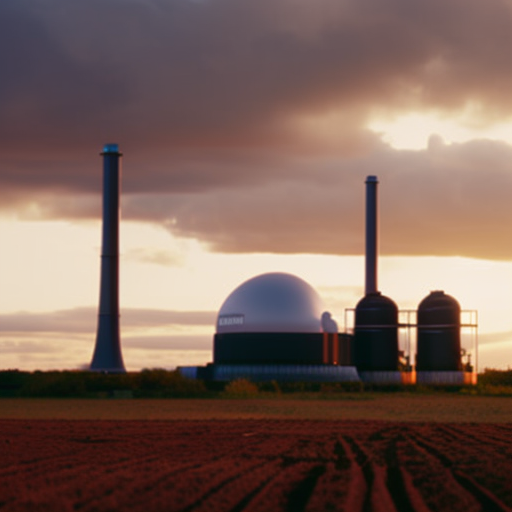
The Dry Anaerobic Digestion Market Insights of 2023
The Dry Anaerobic Digestion Market Insights of 2023 is an extensive and comprehensive report that provides a complete analysis of the market’s size, shares, revenues, various segments, drivers, trends, growth, and development. The report also highlights the limiting factors and regional industrial presence that may affect the market’s growth trends beyond the forecast period of 2031. The market research aims to obtain a complete understanding of the industry’s potential and to provide insights that will help businesses make informed decisions. The Dry Anaerobic Digestion Market Report is an impressive PDF 121 pages long document that includes a comprehensive table of contents, a list of figures, tables, and charts, as well as extensive analysis.
The report offers valuable insights and strategies that can help businesses navigate the market’s complex landscape and maximize their ROI. It provides an in-depth analysis of the market’s competitive environment, including key players operating within the industry, their market share, and their competitive strategies. The Dry Anaerobic Digestion Market Insights Report also delves into the market’s growth drivers, including market demand, supply, and various technological advancements. It also highlights the constraints that may impact the market’s future growth, such as the technological limitations, regulatory frameworks, and other political factors.
This market report is an essential tool for all stakeholders, whether they are investors, business owners, or researchers looking for the latest market trends and insights. By providing a comprehensive analysis, the report enables businesses to make informed decisions about their future growth strategies. With the Dry Anaerobic Digestion Market Insights 2023-2031, businesses have everything they need to understand the market and develop successful business strategies that will help them thrive in the future.
Who is the largest manufacturers of Dry Anaerobic Digestion Market Worldwide?
- PlanET Biogas Global GmbH
- EnviTec Biogas AG
- BioConstruct
- IES BIOGAS
- SEBIGAS
- BEKON
- Organic Waste Systems (OWS)
- WELTEC BIOPOWER GmbH
- Xergi A/S
- BTS Biogas
- HoSt
- IG Biogas
- Zorg Biogas AG
- BTA International GmbH
- Lundsby Biogas A / S
- Finn Biogas
- Ludan Group
- Naskeo
- Agraferm GmbH
- Mitsui EandS Engineering Co. Ltd
- Hitachi Zosen Inova
- Strabag
- Thön
Get a Sample PDF of report – https://www.precisionreports.co/enquiry/request-sample/23150586
This Dry Anaerobic Digestion Market report includes a competitive landscape analysis, providing insights into prominent players with considerable market shares. With detailed data reflecting the performance of each player shared, readers can acquire a holistic view of the competitive situation and a better understanding of their competitors.
In today’s fast-paced digital era, the focused industry of Energy and Power has revolutionized the market with its innovative strategies.
By Type
- Vertical Type
- Horizontal Type
By Application
- Energy Crops
- Bio Municipal Waste
- Other
The research delves into the countries section, encompassing selected market variables that play a crucial role in steering both present and forthcoming market advancements. This study encapsulates various regions worldwide, including the influential players of the United States, Europe, China, Japan, India, Southeast Asia, Latin America, and the Middle East and Africa. By exploring the market dynamics and trends across these diverse regions, a comprehensive understanding of the global market landscape emerges, enabling informed decision-making and strategic planning for businesses operating on a global scale.
This comprehensive report provides in-depth coverage of various crucial aspects including revenue forecast, company ranking, competitive landscape, growth factors, and latest trends. It offers invaluable insights into the future prospects of the market, enabling businesses to make informed decisions. With accurate revenue forecasts, companies can plan their investments and resources efficiently.
Why is the Dry Anaerobic Digestion Market Report 2023 Significant?
The Dry Anaerobic Digestion Market Report 2023 holds significant value in providing a comprehensive understanding of the global economic landscape. In a world constantly influenced by various factors, such as the COVID-19 pandemic and regional conflicts, this research report analyzes the market from 2018 to 2031, offering both quantitative and qualitative analysis. It goes beyond mere sales and revenue metrics, delving into segmented markets based on region, product type, and downstream industry. By examining key factors like macro-economy, industry news, and policies, the report becomes a vital tool for businesses and investors seeking to navigate the challenging waters of the Dry Anaerobic Digestion market. Furthermore, it sheds light on technology advancements, supply chain challenges, and investment scenarios, allowing for well-informed decisions and efficient resource allocation. As the world’s economy continues to evolve, the Dry Anaerobic Digestion Market Report remains an indispensable resource, providing a clear and distinct picture of market distribution and empowering readers to adapt in this ever-changing landscape.
Request a Sample Copy of the Dry Anaerobic Digestion Market Report 2023 Here
Has
SDGs, Targets, and Indicators Analysis
1. Which SDGs are addressed or connected to the issues highlighted in the article?
- SDG 7: Affordable and Clean Energy
- SDG 9: Industry, Innovation, and Infrastructure
- SDG 11: Sustainable Cities and Communities
- SDG 12: Responsible Consumption and Production
- SDG 13: Climate Action
The article discusses the Dry Anaerobic Digestion Market, which is related to the production of clean energy (SDG 7) through innovative technologies and infrastructure (SDG 9). The market’s growth also has implications for sustainable cities and communities (SDG 11) as it can contribute to waste management and renewable energy generation. Additionally, the market’s focus on responsible consumption and production (SDG 12) aligns with the goals of reducing waste and promoting sustainable practices. Finally, the article mentions the impact of the COVID-19 pandemic and regional conflicts, which are relevant to climate action (SDG 13) and global peace and justice.
2. What specific targets under those SDGs can be identified based on the article’s content?
- Target 7.2: Increase the share of renewable energy in the global energy mix
- Target 9.4: Upgrade infrastructure and retrofit industries to make them sustainable
- Target 11.6: Reduce the environmental impact of cities through sustainable waste management
- Target 12.4: Achieve environmentally sound management of chemicals and waste
- Target 13.1: Strengthen resilience and adaptive capacity to climate-related hazards
The article highlights the growth and development of the Dry Anaerobic Digestion Market, which contributes to increasing the share of renewable energy in the global energy mix (Target 7.2). The market’s focus on innovative technologies and infrastructure aligns with the target of upgrading infrastructure and retrofitting industries to make them sustainable (Target 9.4). The market’s potential for waste management and renewable energy generation supports the goal of reducing the environmental impact of cities (Target 11.6) and achieving environmentally sound management of chemicals and waste (Target 12.4). Finally, the article mentions the impact of the COVID-19 pandemic and regional conflicts, which highlights the need to strengthen resilience and adaptive capacity to climate-related hazards (Target 13.1).
3. Are there any indicators mentioned or implied in the article that can be used to measure progress towards the identified targets?
Yes, there are indicators mentioned or implied in the article that can be used to measure progress towards the identified targets. Some potential indicators include:
- Share of renewable energy in the global energy mix
- Investment in sustainable infrastructure
- Reduction in waste generation and increase in waste recycling rates
- Adoption of sustainable waste management practices
- Resilience and adaptive capacity to climate-related hazards
These indicators can be used to track progress towards achieving the targets under the relevant SDGs.
Table: SDGs, Targets, and Indicators
| SDGs | Targets | Indicators |
|---|---|---|
| SDG 7: Affordable and Clean Energy | Target 7.2: Increase the share of renewable energy in the global energy mix | Share of renewable energy in the global energy mix |
| SDG 9: Industry, Innovation, and Infrastructure | Target 9.4: Upgrade infrastructure and retrofit industries to make them sustainable | Investment in sustainable infrastructure |
| Target 9.5: Enhance scientific research and upgrade technological capabilities of industrial sectors | Research and development investment in innovative technologies | |
| SDG 11: Sustainable Cities and Communities | Target 11.6: Reduce the environmental impact of cities through sustainable waste management | Reduction in waste generation and increase in waste recycling rates |
| SDG 12: Responsible Consumption and Production | Target 12.4: Achieve environmentally sound management of chemicals and waste | Adoption of sustainable waste management practices |
| SDG 13: Climate Action | Target 13.1: Strengthen resilience and adaptive capacity to climate-related hazards | Resilience and adaptive capacity to climate-related hazards |
Behold! This splendid article springs forth from the wellspring of knowledge, shaped by a wondrous proprietary AI technology that delved into a vast ocean of data, illuminating the path towards the Sustainable Development Goals. Remember that all rights are reserved by SDG Investors LLC, empowering us to champion progress together.
Source: benzinga.com

Join us, as fellow seekers of change, on a transformative journey at https://sdgtalks.ai/welcome, where you can become a member and actively contribute to shaping a brighter future.






